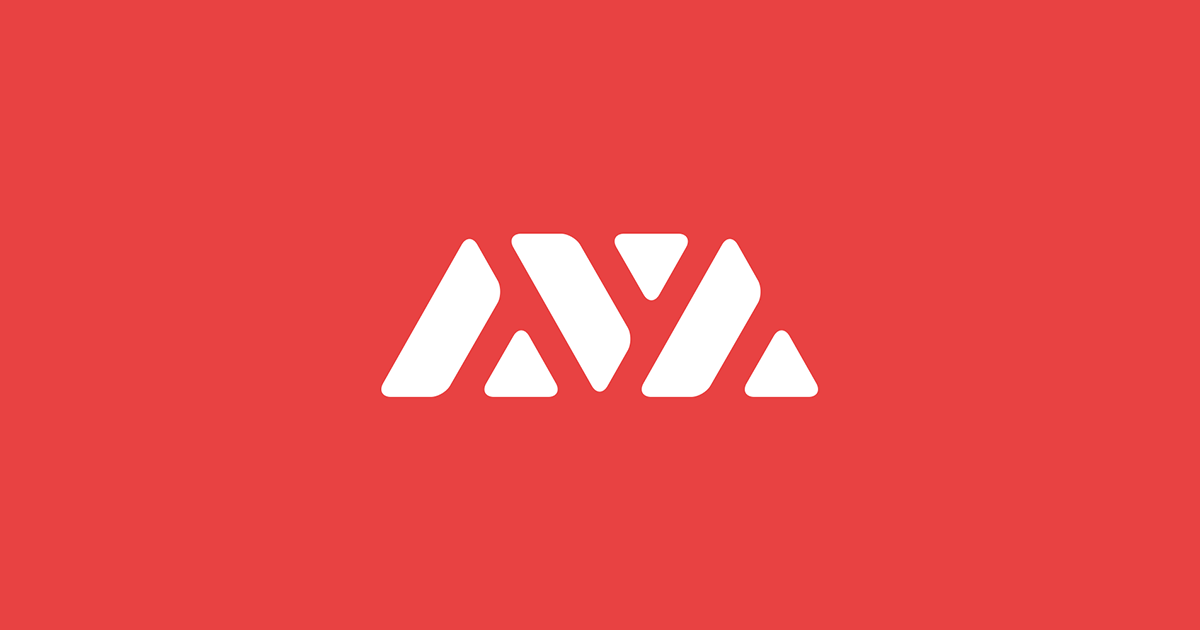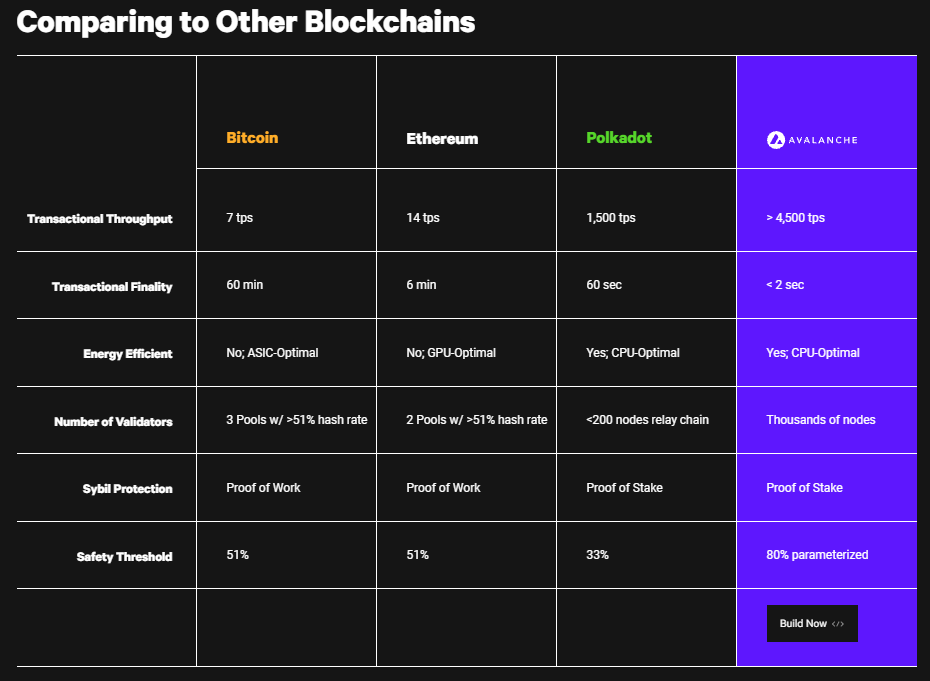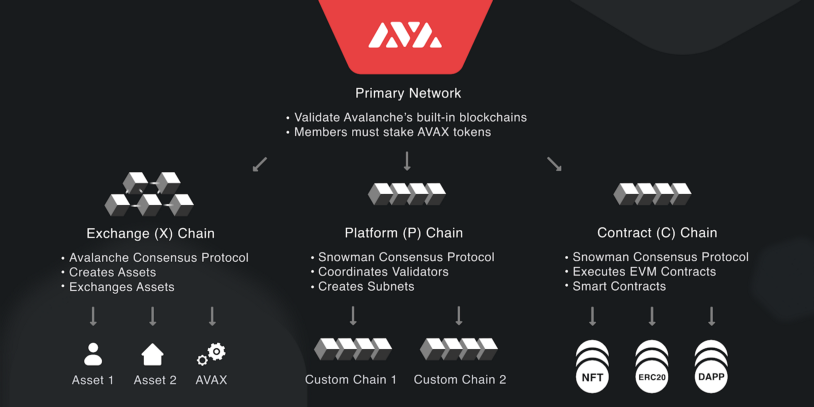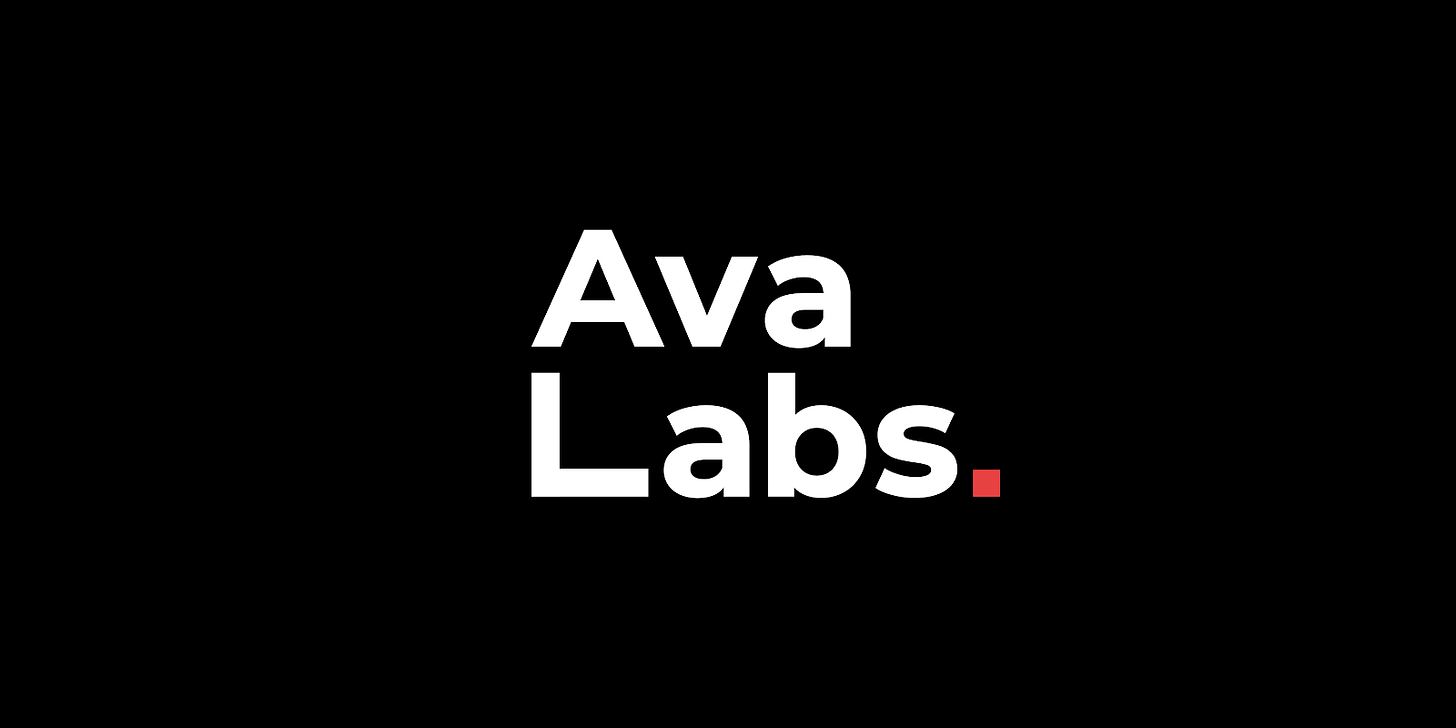MAJR DAO Report: Avalanche
The Internet of Assets. A Global Financial Network for the Issuing and Trading of all Digital Goods.
MAJR Coins is a research initiative highlighting top projects for investors.
This is not investment advice. Do your own research. These are personal opinions only.
- MAJR TeamAvalanche
“Blazingly Fast, Low Cost, & Eco-Friendly.”
Avalanche is the fastest smart contracts platform in the blockchain industry, as measured by time-to-finality, and has the most validators securing its activity of any proof-of-stake protocol.
Brief:
In this addition of MAJR Coins, we will re-analyze crypto project, Avalanche (AVAX). We first covered the project back in September 2020 when it launched at $4.29 with a market cap of $14.7 million. It’s now $63.06 with a market cap of $13.8 billion - 14x. You can find the original article here.
In this article, we cover the technology, its purpose, the team and its investors. We detail the pros and cons as well as provide a token rating score based on the project’s fundamentals, pumpamentals and market sentiment. The token information can be found at the end.
Matt Verklin
@mverklin
What is Avalanche?
Avalanche is an open source layer 1 (L1) smart contract blockchain platform for creating custom blockchains and deploying public and private decentralized applications (dApps) built by Ava Labs. The Avalanche mainnet launched in September 2020.
Avalanche uses a Proof of Stake (POS) consensus protocol, as opposed to a Proof of Work (POW) consensus protocol like Bitcoin that requires miners to process transactions. Ethereum, the leading L1 smart contract blockchain platform currently uses POW and is in the process of migrating to a POS consensus protocol.
Some of the key differences and claims between Avalanche and other L1s.
High throughput: ~4,500 transactions per second (TPS)
Avalanche and Snowman consensus protocols: claim to be breakthroughs in computer science
Compatible Solidity dApps: Ethereum applications can be run on Avalanche
Network of Networks: Avalanche’s network is composed of 3 different subnets (Platform Subnet: P-Chain; Exchange Subnet: X-Chain; Contract Subnet: C-Chain) and dynamic validators
How It Works
Avalanche consists of three built-in blockchains (Subnets), each designed with specific properties and responsibilities that roll up into the Avalanche Primary Network.
Primary Network: Validates Avalanche subnet blockchains. All members of each subnet must be a member of the Primary Network by staking at least 2,000 AVAX tokens.
Platform Chain (P): Uses the Snowman Consensus Protocol. Coordinates the network validators. Creates Subnets.
Exchange Chain (X): Uses the Avalanche Consensus Protocol. Creates digital assets and exchanges digital assets.
Contract Chain (C): Uses the Snowman Consensus Protocol. Executes Ethereum Virtual Machine (EVM) contracts and smart contracts - NFTs, ERC-20 tokens and dApps.
Avalanche’s subnet architecture is used to spread computation resources across it’s subnet networks and allows for manageable regulatory compliance. For example, a subnet that manages many blockchains may require specific rules for it’s validators such as - validators must be located in a given country, validators must pass a KYC/AML check and validators must hold a certain license.
This is helpful for private blockchains that wish to keep their information private.
This also allows for validators to pick which blockchains they want to work with which reduces the computation burden on the validators. For example, some blockchains may require validators to have certain properties like large amounts of RAM, CPU power or hardware requirements for performance purposes.
Avalanche Consensus
Consensus algorithms are the most important part of distributed system protocols.
The Avalanche Snowman Consensus Protocol has quick finality (transaction settlement), low latency and high throughput which makes it fast, scalable and quite secure. Inspired by gossip protocols, Avalanche uses sub sample voting to efficiently come to consensus. Here’s an explainer video detailing how it works.
In addition, they’re “ecofriendly” because its a proof of stake chain, they have privacy enabled transactions and a plug-in-play infrastructure to help ease the friction for enterprises adopting blockchain infrastructure.
The Token: AVAX
AVAX is the native token of Avalanche.
Stake never gets slashed.
Minting rate can be changed by the network participants that are staking.
Fixed cap of 720m tokens, deflationary staking mechanisms. The current staking yield is 12%.
Token information can be found here. Where to buy can be found here.
Store on AVAX Wallet - here.
Team, Investors, and Partnerships
The Avalanche protocol was incubated at Cornell and was designed by the Ava Labs team and lead by blockchain visionary, CEO Emin Gün Sirer.
Emin is a rock star. He went to undergrad at Princeton where he studied Computer Science and later got his Ph.D. in computer science at Washington University. In 2001, he arrived at Cornell where he started working on distributed systems and digital currencies. He even created a digital currency called Karma that used Proof of Work (POW) before Satoshi Nakamoto invented Bitcoin.
In 2018, Emin founded Ava Labs and built a team comprised of Cornell computer scientists, economists and lawyers. It was at this time they started working on the Avalanche blockchain, which was later released in September 2020.
MAJR Conclusion
We’re extremely bullish on Avalanche and the AVAX token. It checks all the major boxes that we look for in a project - great leader and team, the technology is there and running, it’s well funded, the token is becoming more liquid and available, and most of all it’s low market cap.
Avalanche plays in a competitive space with other well funded and expert led teams, however there’s much more upside given it’s lower market cap and the fact it’s not US exchanges yet.
Even though the token has seen a massive appreciation over the last two months, these tokens with quality narratives and quality tech have a tendency to run and not look back.
Avalanche is now entering the mainstream conversation with projects like Ethereum, Solana, Terra and Polkadot. Layer 1 smart contract chains is a big theme moving forward and will gravitate the next institutional investment wave after Bitcoin and Ethereum.
We also look for deflationary characteristic in a project’s tokenomics and the fixed cap and the token burning mechanism really stands out and should help with price acceleration, if anything from a marketing standpoint.
Pros
Scalability: Super fast transaction times with low fees. This is the most important as most users don’t care about the backend as much as they care about a quality user experience.
Low Market Cap - $13.8B: Avalanche is a competitor in a huge space with massive upside as other L1 smart contract blockchains have much higher market valuations - Ethereum: $332B, Cardano: $65B, Binance Smart Chain: $56B, Polkadot: $27B, Solana: $39B. Avalanche’s fully-diluted market cap of $45B is on the low end for where these early general blockchains.
Not on US Exchanges: While not being on regulated US exchanges like Kraken, Gemini or Coinbase is an obstacle for buying and selling the token, it still hasn’t had it’s “Coinbase Listing Moment" when it because easily accessible to much of the US retail investing community, but also gains exposure to more US institutional players.
$180M Development Fund: Avalanche Rush Incentive Program for development on it’s network. It’s a huge amount of money to help bring companies to build on it’s network and has already attracted big names like Aave, Curve, SushiSwap.
Avalanche Ethereum Bridge: Existing dApps built on Ethereum can run on top of the Avalanche network as it’s compatible with Ethereum’s programming language, Solidity. This should help foster immediate growth as dApps have experienced slow and expensive transaction times offering a poor user experience.
GO Programming Language: GO is a much wider used programming language than Solidity, which will make building on Avalanche much easier than learning a new programming language.
Staking Incentives: Avalanche is currently offering 12% staking incentives using it’s digital wallet. Must have at least 2,000 AVAX tokens to stake, which is approximately $100k.
Fixed Cap Supply: Hard capped at 720,000,000 tokens and all transaction fees are burned making it a deflationary asset.
DeFi Focus: The team has placed a huge amount of focus on becoming the fastest blockchain for decentralized finance which is the hottest market in the crypto space for institutional adoption that’s also less frothy than the current NFT market, which Avalanche will play in as well.
Cons
Lower Network Effects: Avalanche is a much younger network without much fan fair or branding, and most importantly less development than Ethereum. This will create obstacles for existing users and developers to switch to something new with less user activity and a steeper learning curve. For example, there’s less applications to use and less known digital wallets available.
Low Liquidity: It’s important to be able to get and out of positions when needed and the AVAX token isn’t available on the main US exchanges and requires you to sign up with foreign exchanges. We recommend Gate.io for US users. You can also get it on the Voyager digital wallet / exchange app.
Already up 300%: The AVAX token has been on a seriously rally over the last couple months, up more than 300%. Tokens are extremely volatile and a good rule of thumb is not to FOMO into coins or buy big candles. While it might be a good idea to let the coin cool off, tokens can keep running if the narrative, marketing and development is positive and there’s more room to grow. In AVAX case, it could go both ways.
Centralization: While the Avalanche protocol boasts of nearly 1,000 nodes, it’s still very early for the network and given it’s subnet architecture, it leads us to believe their could possibly be censorship capabilities or increased centralization. For example, it’s $100k minimum investment to stake AVAX tokens, which only increases centralization and control for those who have the capital.
Relatively High Inflation: This is an issue we’d like to avoid and it’s the problem with investing in early projects. We’ve already been slightly burned by new coins diluting our investment and there’s only 24% of the total supply that’s in circulation, which means 76% of the new coins haven’t hit the market yet. However, Avalanche does have a burning mechanism and a fixed supply which could limit the inflation risk.
MAJR Rating: 61.4 / 70
Narrative: 9.1
Community: 8.5
Team: 9.3
Tech: 8.5
Liquidity: 7.9
Tokenomics: 8.5
Potential for Growth: 9.6
Sources:
MAJR’s Top Projects:
Bitcoin, Ethereum, Polkadot, Kusama, Chainlink, Solana, Decentraland, Uniswap, Aave, Enjin, Maker, Filecoin, Terra, Avalanche
MAJR’s Simple Investment Strategies:
100% BTC - Min. Risk80% BTC / 20% ETH - Min. Risk50% BTC / 50% ETH - Med. Risk50% BTC / 25% ETH / 25% [insert coin above] - Higher Risk
Reminder:Content is moving behind the paywall this month. Subscribe to get the daily newsletter, digital asset research and analysis and exclusive articles and media.
THIS IS NOT FINANCIAL ADVICE. IT’S IMPORTANT TO DO YOUR OWN RESEARCH. INVESTING IN CRYPTOCURRENCY OR ANYTHING FOR THAT MATTER COMES WITH RISK. THE INFORMATION PRESENTED IN THIS NEWSLETTER IS FOR INFORMATION AND ENTERTAINMENT PURPOSES ONLY. 












